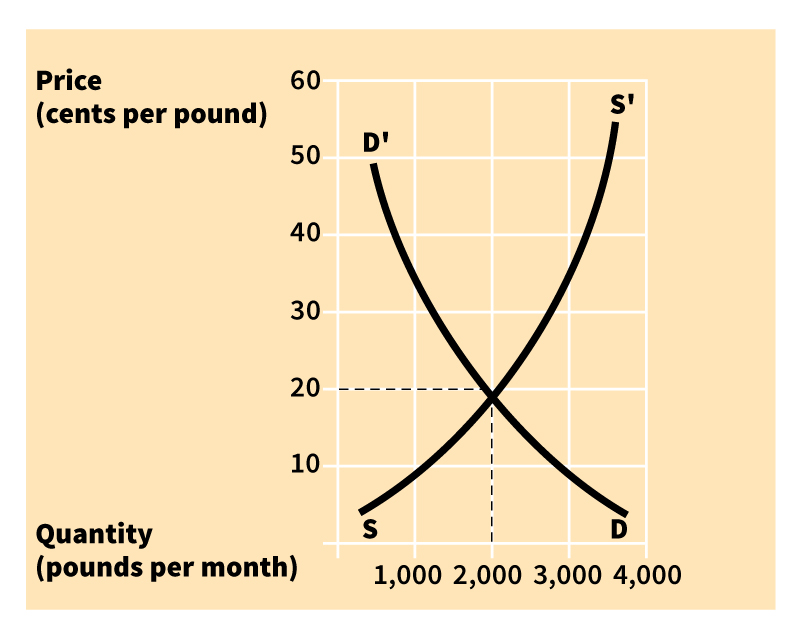Supply and demand are economic forces that determine the amount of a product that is produced and its price. The supply of a product is the amount of it that businesses are willing and able to offer for sale at various prices. Generally, the higher the price is, the greater the amount supplied will be. Similarly, the demand for a product is the amount of it that users can and would like to buy at various prices. Demand also depends on the price, but in the opposite way. Usually, the quantity demanded is lower at high prices than at low ones. Because the amount that producers actually sell must be the same as the amount that users actually buy, the only price at which everyone can be satisfied is the one for which supply equals demand. This is called the equilibrium price.

Consider the market for onions as an example. Pounds of onions are produced each month at a variety of market prices. Higher prices encourage farmers to produce more onions, and low prices discourage production. Consumers, on the other hand, generally buy more onions when prices are low. At high prices, the customers use other vegetables.
Supply and demand for a particular product generally intersects at a certain price. When this is the market price, suppliers will offer just the quantity that users wish to buy. At any higher price, farmers will produce more product than consumers are willing to buy, and competition among farmers will force the price down. At prices lower than equilibrium, purchasers will demand more product than is available, and the scarcity of that product will drive the price up.
